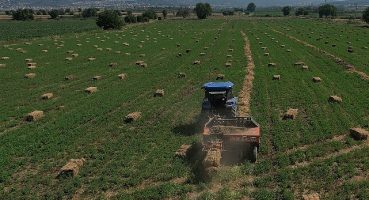In the last 2 years. Nearly two and a half years after a mysterious cluster of pneumonia cases was first reported in Wuhan, China, SARS-CoV-2 has killed more than 6 million people and sickened hundreds of millions more worldwide. During this time, many governments, from the local to the national level, have made extraordinary efforts to combat the spread of the deadly pathogen, from closing borders to implementing contact tracing systems, adopting mask instructions, and closing businesses.
2020. The virus has put the economy into a very short recession. With several curfews around the world, labor force participation has drastically decreased. People’s spending was driven by needs spending, which caused the economy to decline rapidly. Governments around the world have accumulated enormous amounts of debt and offered incentives to citizens to stimulate their economies.
The pandemic has brought about various changes in consumer behavior and acceleration in market trends that all brands have to adapt to quickly. Looking back on this highly unusual year, one thing stands out loud and clear – change is difficult; It happens gradually and then suddenly.
Everything was quickly rerouted to survive a global pandemic. As a result, some emerging market sectors accelerated rapidly, while others were interrupted, seemingly overnight.
According to IBM data, the gradual transition from physical retail to e-commerce has accelerated for about five years. Food delivery apps were expected to increase their US users by 25.2% this year.
Meanwhile, the lights of the booming location-based experiential economy, which, along with travel and hospitality brands, had to contend with major disruptions to the foundation of their businesses, went out.
By October, 58% of the U.S. workforce has transitioned to full-time or part-time work from home, with nearly half of U.S. elementary and high school students starting their fall semester entirely online. As a result, while it may seem rather stagnant to the millions stranded at home this year, in reality, there has probably been more change this year than the last five years combined.
2021. Overcoming the second year as a pandemic has been a huge challenge for everyone, but especially for developing countries like Brazil. Today, fortunately, we can see a light at the end of the tunnel. Thanks to science, effective vaccines against COVID-19 have been developed, and the numbers associated with the disease have fallen exponentially. Caution is still required, but it is now possible to envision a more optimistic future.
An important lesson we all learn is how conservation and sustainability sciences play an important role in tackling pandemics. For example, deforestation of tropical forests makes contact between humans and mammals carrying viruses that could trigger a new global epidemic. Therefore, actions for conservation, restoration and anti-deforestation policies are necessary to avoid new health crises.
From a business perspective, 2021 was a difficult year for companies that did not plan their staffing processes, as the demand for digitalization in many industries has increased tremendously. Some of these stood out in technology improvements.
The finance, banking and insurance sectors have been the largest in growth and investment, particularly in LATAM, where the problem of financial inclusion has become an opportunity.
The retail industry needed to skillfully reshape its operations and supply chain and invest heavily in rebuilding its supply chains. The logistics industry has also undergone a digital transformation to follow the new demand.
The healthcare industry is investing in innovation in both the medical and administrative department and increasing its capacities through digitalisation.
2021 taught us a lot about resilience and adaptability. While we had to adapt quickly to the new normal in 2020, in 2021 we improved the processes built in the rush of the first hit of the pandemic and took the best out of it.
Demographic disaster. We can never know exactly how many of us are alive at any given time, but the United Nations estimate of when we will reach 8 billion people is that we are very close.
While the world population is increasing rapidly, the growth rate is starting to slow down. Eventually it will begin to decline and our societies will shrink. Humanity is changing from day to day in ways we cannot perceive in a short time but will reshape our world in the next century.
-With fertility rates falling around the world, there will never be more children than there are today.
-We are getting older, which means there are fewer people who can work to support more people who can’t work.
-Cities are expanding, gnawing up arable land as they progress.
-We are seeing a great shake-up in the world’s huge population centers.

World population has grown by over 7 billion in two centuries… Estimated world population from 10,000 BC to 2021… Source: ABC News, Gapminder, UN World Population
The world is likely to have several billion more mouths to feed in just a few decades. The UN’s latest estimates, released earlier this year, show that the world will house around 9.7 billion people in 2050. “Demographic estimates are extremely accurate and relate to the fact that most of the people who will live in 30 years are already born,” says John Willmoth, UN’s director of population division.
In the most likely scenario, the UN estimates that the world’s population will reach approximately 10.4 billion by the 2080s. From there, it is projected to progress to a steady plateau for several decades before falling off at the beginning of the 22nd century. There is another international pattern of population growth, published by the health data research group IHME, which predicts an earlier population peak and a faster decline. “The main reason we predict a diverse global population in the last third of the century comes from how we model fertility,” says Amanda Smith, senior research director.

Fertility rates are already below the substitution level in some regions… Estimated number of children per woman per year in each region (UN Projections after 2022)… Source: United Nations World Population Prospects
All of the above studies have not taken into account the impact of global warming and the migration waves that will follow. Food-savvy Dr Rachel Carey, a sustainable food systems expert at the University of Melbourne, says growing enough food isn’t really the biggest issue: “To date, the world has managed to keep up with food production, the world has produced enough food. We certainly see local food shortages at different times, and this may be due to problems with climate change, conflict and war, but enough food has been produced around the world. Climate change is the big elephant in the room here. We know that some of the places that will experience the most impact are the least resilient, so that’s something we need to watch out for.”
Environmental disaster… Bahamas Prime Minister Philip Davis, addressing the United Nations climate conference COP 27 last week, urged government leaders to “act quickly to address the systemic risk of climate change”. While the world is recovering from a number of health crises and socio-economic problems, the Prime Minister noted that these should not be used as an excuse not to tackle problems that will greatly affect the human race. Davis continued: “The realities of war, economic setbacks, the remnants of the pandemic, and the rivalry between world powers cannot be used as justifications for not facing these imminent dangers. We are entering a new climate era that will cause extreme geopolitical and economic instability. Statements without binding commitments or enforcement mechanisms have been used repeatedly as a way to delay actual action. Yes, the world’s richest carbon polluters must pay for the enormous loss and damage their emissions cause.”
In last year’s Glasgow climate agreement, all countries agreed to “keep 1.5C alive” by making “rapid, deep and sustained” cuts to greenhouse gases. But ministers were unable to agree on a statement on climate change, as China and India were reportedly questioning the scientific feasibility of the 1.5C threshold at a G20 meeting in Indonesia in August.

Projected trends in emissions and warming… Global greenhouse gas emissions, in gigatons of carbon dioxide equivalent. Source: Climate Action Tracker, November 2022, BBC
Kaynak: Tera Yatırım-Enver Erkan
Hibya Haber Ajansı
















